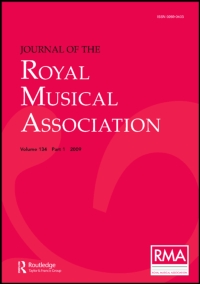Article contents
The Gipsy in Andalusian Folk-Lore and Folk-Music
Published online by Cambridge University Press: 01 January 2020
Extract
My object in reading this paper before the British Musical Association is to describe certain observations I have made concerning the folk-lore and music of the south of Spain. I shall not attempt to deal with the great problem of Spanish musical history: that has been done by Professor Trend in his excellent books such as The Music of Spanish History and Manuel de Falla. My study of the music of the south of Spain is mainly based upon personal experience as a minstrel in the towns and villages of the country, where I had the opportunity of mixing with folk-singers, guitarists, gipsy minstrels and dancers. My main object in studying thus the music of the Andalusian folk was to enable me to arrive at a deeper understanding of that elusive Indian Romany race which has played such an important part in the history of European music. It will, therefore, not be amiss if to-day I consider briefly the history of the gipsies as minstrels.
- Type
- Research Article
- Information
- Copyright
- Copyright © Royal Musical Association, 1935
References
1 Trend, J. B., The Music of Spanish History, Oxford, 1925.Google Scholar
2 Trend, J. B., Manuel de Falla, New York, 1929.Google Scholar
3 R. Menéndez Pidal, Poesia Juglaresca y Juglares, Madrid, 1924.Google Scholar
4 M. de Falla, El Cante Jondo (canto primitivo andaluz), Granada, 1922.Google Scholar
- 1
- Cited by


